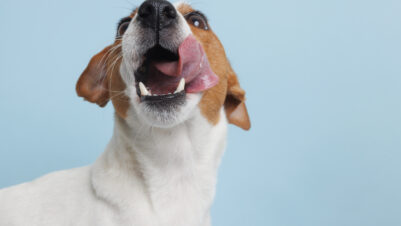WHEN thinking about the development of a foal, usually the first thought that springs to mind is the foal’s physical growth, but what about their behavioural development too?
There are many different factors that can affect behavioural development, several of which we can help with. Deciding to breed from a mare is a complex decision but once the horse owner has decided to go ahead every opportunity to provide the best start in life, in every respect, should be taken.
Even before they are born, certain factors such as genetics are already influencing the future behaviour of the foal. This may be the mare and stallion’s temperament, which we do have some influence over when selecting the sire, or indeed whether to breed from a mare, but it could also be related to inherited diseases.
An example of this would be night blindness in Appaloosas, where the vision is impaired or even absent at night; this can influence both reactiveness and trainability.
We may be able to screen for some of these diseases but any condition, genetic or otherwise, causing pain, affecting the foal’s ability to respond to its environment or its health generally could influence behaviour.
Sensory development
In terms of sensory development the first two weeks are very important to the foal. This is worth special consideration if the mare has a difficult birth or infection afterwards, as it may affect her ability to interact and bond with her foal.
Part of being a mum is a learnt behaviour so first time dams will also find it harder. If for any reason the foal has to be hand-reared or grows up without other foals, this also affects its behaviour as it may become either over-bonded or over-familiar with humans.
Positioning and separation
Where the dam is positioned within the herd can be influential. Foals with higher ranking dams may be protected from other herd members when mum is close by, allowing more suckling through fewer interruptions.
However, these foals were also found to be at higher risk of developing abnormal stereotypical behaviour. Another positive to being born to a lower ranking mare is they may have more positive interactions.
Separation from the dam is understandably stressful, either while the mare goes to stud or during weaning. During weaning in addition to being removed from its dam the social structure often changes, perhaps even involving the foal being isolated from all other horses. At this time the environment, nutrition and interaction with humans may also alter.
The method used for weaning is thought to have more impact on the foal than the age at which it happens. Abrupt methods of weaning or those which isolate the foal may be more stressful.
Paddock-weaning, where all the mares and foals are turned out together and sequentially the mares are removed one at a time, leaving the foals in the same environment with other weanlings, was shown to be less stressful than a more traditional method. These foals would be exposed to equine appeasing pheromone until the last mare is removed.
Nursing mares, like many mammalian species, naturally produce an appeasing pheromone which provides reassurance to their foal. This pheromone helps to allow the foal to feel safe, secure and more confident when encountering new situations and unknown environments, helping them learn about the world around them.
Equine appeasing pheromone (commercially available as ConfidenceEQ, Ceva Animal Health) was shown to decrease restless behaviour in foals temporarily separated from their dams.
Dietary considerations at weaning are important and to minimise stress a gradual alteration in diet is beneficial. While weaning there is evidence to support giving a diet higher in fat and fibre compared to one that is higher in sugar and starch.
Feeding concentrate afterwards may increase the risk of crib-biting behaviour, which is associated with an elevated chance of gastric inflammation and ulceration. Stereotypies in wild horse populations have not been seen but in captive equines most are already starting to develop within one month of weaning.
Handling
Our handling and interaction with the mare before the foal is weaned is really important as the foal will observe these encounters and learn from them. Every single time we handle a horse it is important to remember it will be learning from what we do; it is being trained whether or not the breeder is conscious of this. Handling the foal from a young age is a good idea to help with later training although there is some debate over the frequency, amount, variability and timing of this handling.
Unlike in puppies a definitive socialisation period has not been established in horses. The best approach seems to be providing less intensive, sustained handling in the right way from a young age.
There are many factors affecting the behavioural development of foals and although some are outwith our control there are others we can really help with. For example:
- taking steps to carefully plan weaning so stress to both the foal and mare is minimal
- trying to set up good handling facilities so we can regularly interact positively with the foal from an early age
- putting time and effort into training the broodmare so she is happy to be handled long before the birth, and if possible ensuring the foal has peers to play with
Paul McGreevy, in his book Equine Behaviour: a Guide for Veterinarians and Equine Scientists, sums it up perfectly: “Individualised attention to the behavioural conditioning of young stock pays dividends throughout their lives.”






